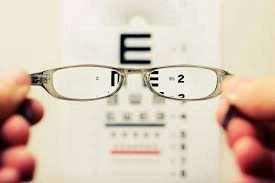
LASIK vs. Femto-LASIK: Dr. Ahmed Mostafa Khodr Explains the Difference
Published on: 2025-06-23 | Written by: Dr. Ahmed Mustafa Khader, Master of Ophthalmology
Dr. Ahmed Mostafa Khodr, Consultant in Ophthalmology and Eye Surgery, explains that laser vision correction procedures have greatly evolved in recent years. Among the most common and trusted techniques are traditional LASIK and Femto-LASIK.
But what exactly is the difference between them? And which one is better for you? In this article, Dr. Ahmed Mostafa Khodr provides a simple breakdown to help you choose the right option for your eyes.
What Is Traditional LASIK?
LASIK (Laser-Assisted in Situ Keratomileusis) is a procedure that reshapes the cornea using a laser to correct vision problems like nearsightedness, farsightedness, and astigmatism.
In traditional LASIK, a mechanical blade called a microkeratome is used to create a thin flap in the cornea, which is then reshaped with an excimer laser.
Advantages of LASIK:
-
Quick improvement in vision
-
Minimal discomfort after the procedure
-
Lower overall cost
However, Dr. Ahmed Mostafa Khodr points out some drawbacks:
-
Risk of flap-related complications due to the mechanical blade
-
Less ideal for patients with thin or irregular corneas
What Is Femto-LASIK?
Femto-LASIK uses a femtosecond laser instead of a blade to create the corneal flap with extremely high precision. The remaining steps are similar to traditional LASIK.
According to Dr. Ahmed Mostafa Khodr, the benefits of Femto-LASIK include:
-
Greater accuracy in flap creation
-
Suitable for thinner or more delicate corneas
-
Reduced risk of surgical complications
-
Faster recovery and increased comfort
The main downside:
-
Higher cost compared to traditional LASIK
Comparison Table: LASIK vs. Femto-LASIK
| Feature | Traditional LASIK | Femto-LASIK |
|---|---|---|
| Flap creation method | Mechanical blade | Femtosecond laser |
| Safety level | Good | Higher |
| Recovery time | 1 to 3 days | Often less than 24 hours |
| Cost | Lower | Higher |
| For thin corneas? | Not recommended | Recommended |
Which One Is Better for You?
Dr. Ahmed Mostafa Khodr explains that the decision isn’t based solely on the technique—it depends on:
-
Corneal thickness
-
Degree of refractive error
-
Presence of astigmatism
-
Your lifestyle and budget
That’s why a thorough eye examination is essential before choosing the right option.
Conclusion
Both procedures are effective and safe when performed by a qualified ophthalmologist. Dr. Ahmed Mostafa Khodr advises patients to consult a specialist after proper testing, as every case is unique—and what works for one person may not suit another.

